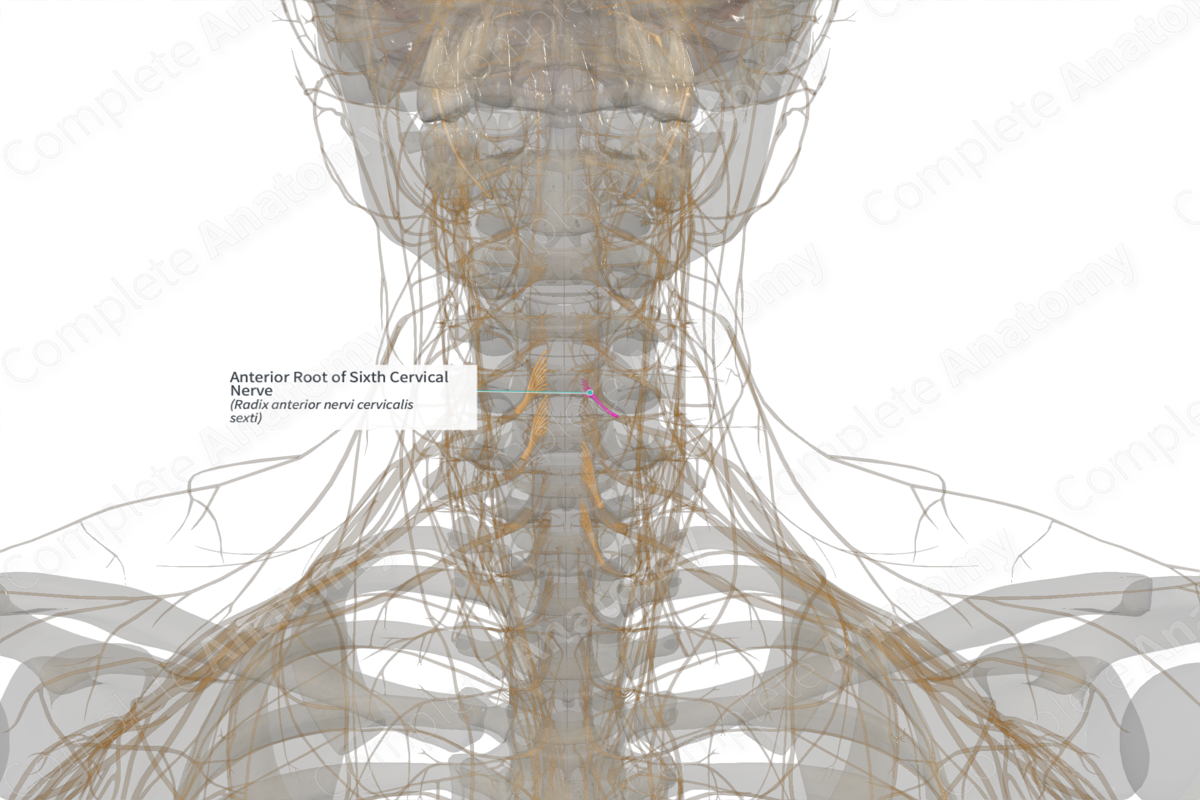
Anterior Root of Sixth Cervical Nerve (Right)
Radix anterior nervi cervicalis sexti
Read moreQuick Facts
Origin: Anterolateral sulcus of spinal cord.
Course: Laterally towards the intervertebral foramen.
Branches: None.
Supply: Motor innervation to muscles of upper limb, shoulder, and back.
Related parts of the anatomy
Origin
The anterior root of the sixth cervical nerve forms from a series of rootlets that emerge from the anterolateral sulcus of the sixth cervical spinal segment.
Course
The anterior root of the sixth cervical nerve runs laterally and inferiorly away from the sixth cervical spinal segment towards the intervertebral foramen located between the fifth and sixth cervical vertebrae. Roughly within this intervertebral foramen, the anterior root merges with the posterior root to form the sixth cervical nerve.
Size and direction of the spinal roots vary. For instance, the upper cervical roots are short and run horizontally to exit the vertebral canal through the foramen.
Branches
The anterior root of the sixth cervical nerve merges with the posterior root to form the sixth cervical nerve and does so without branching.
Supplied Structures
The somatic motor efferents pass through the spinal nerve itself and into either the posterior ramus or the anterior ramus of the sixth cervical nerve.
Those passing through the anterior ramus convey motor fibers to the superior trunk of the brachial plexus. Fibers that enter the lateral cord of the brachial plexus help innervate muscles of the anterior compartment of the arm (biceps brachii, coracobrachialis, brachialis), pectoralis major, pronator teres, and flexor carpi radialis. Fibers that enter the posterior cord provide motor innervation to the subscapularis, teres major, latissimus dorsi, deltoid, teres minor, triceps, brachioradialis, anconeus, extensor carpi radialis longus, and supinator. Some fibers also contribute to the innervation of the subclavius and supra- and infraspinatus muscles.
Fibers that pass through the posterior ramus innervate the longissimus colli, splenius colli, iliocostalis colli, multifidus, semispinalis colli, semispinalis capitis, and trapezius.
Learn more about this topic from other Elsevier products


